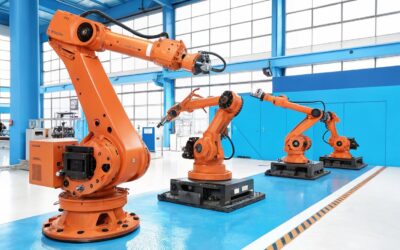Noun
- Acronym for Science, Technology, Engineering, and Mathematics, an educational approach that integrates these four fields to foster innovation and problem-solving skills.
Synonyms
STEAM (adding Art to the acronym)
Etymology
The term STEM was coined in the early 2000s in the United States to address the shortage of skilled workers in science and engineering.
Its origins can be traced back to the 1990s when the National Science Foundation started to promote interdisciplinary approaches to education.
Pronunciation
/stɛm/
Related terms
Mechatronics – Robot – Robotics
Derivatives
STEM Education – STEM Careers
Example sentences
“The school is implementing a new STEM program to engage students in hands-on learning”
“The STEM fields are crucial for innovation and economic growth”
“STEM jobs are in high demand and offer competitive salaries”
Curiosities
STEM fields have traditionally been dominated by men, but efforts are being made to increase diversity and encourage more girls and women to pursue careers in STEM.
Quotations
“In the 21st century, scientific and technological innovations have become increasingly important as we face the benefits and challenges of both globalization and a knowledge-based economy”
John Hoeven
“STEM education is the key to the U.S.’s economic future”
Ron Lewis
“We need to embrace technology to make learning more engaging. Because when students are engaged and they are interested, that’s where learning takes place.”
Anonymous
Historical references
The roots of STEM can be traced back to the 19th century when the Industrial Revolution created a need for workers with technical skills.
However, it wasn’t until the mid-20th century that the term STEM started to be used to describe these fields.
In the 1950s, the Soviet Union’s launch of Sputnik, the first artificial satellite, triggered a response from the United States to improve science and engineering education.
The National Defense Education Act of 1958 provided funding for STEM education, and since then, STEM has been a critical component of education policy in the US.
Fields of application
STEM is used in education, research, and industry to advance knowledge and solve problems.
STEM fields include robotics, mathematics, physics, chemistry, biology, computer science, engineering, and technology.
STEM professionals work in a range of industries, including healthcare, energy, transportation, and communications.
Frequently Asked Questions
What are some benefits of STEM education?
STEM education can provide students with valuable skills, including critical thinking, problem-solving, creativity, and teamwork. It can also prepare students for high-demand, high-paying careers in fields like engineering, computer science, and healthcare.
What are some common misconceptions about STEM?
Some people believe that STEM fields are only for people who are good at math or that STEM careers are only for men. In reality, STEM encompasses a wide range of disciplines and is open to anyone with an interest in these fields.
How can robotics be used to teach STEM concepts?
Robotics can be a powerful tool for teaching STEM concepts because it allows students to apply what they have learned in a hands-on, interactive way. Robotics can help students understand concepts like coding, mechanics, and electronics and encourage them to think creatively and problem-solve.
What are some examples of STEM careers in robotics?
There are many STEM careers in robotics, including robotics engineer, automation specialist, software developer, and data analyst. These careers require skills in areas like programming, electronics, mechanical design, and data analysis and offer opportunities to work in a variety of industries, including manufacturing, healthcare, and transportation.



